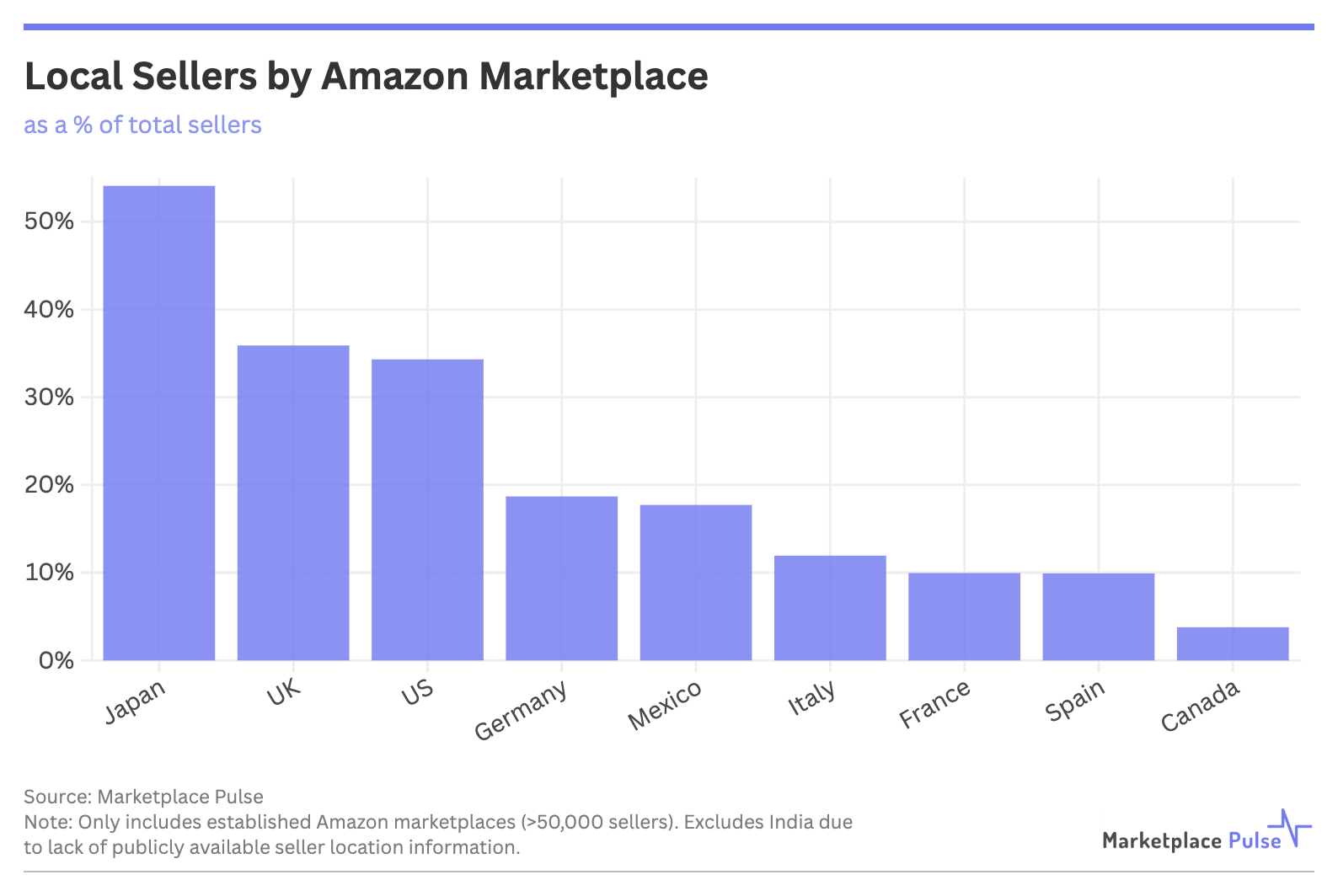Japan is the only remaining established Amazon marketplace where local sellers represent the majority, with 54% of active sellers being Japanese businesses. This stands in stark contrast to most other Amazon marketplaces, where Chinese sellers increasingly dominate and local seller representation continues to shrink.
According to Marketplace Pulse research, Canada has the lowest local seller representation at just 4%, making it almost entirely dependent on cross-border sellers. Despite being Amazon’s oldest and largest, the U.S. marketplace’s active seller base consists of only 34% local businesses - a significant decline from previous years but unsurprising given recent trends.

This analysis considered active sellers across Amazon’s most established marketplaces, defining “active” as those who received at least one seller feedback in the past year and “established” marketplaces as those with over 50,000 sellers.
Current trends will soon rescind Japan’s position as the last bastion of local seller dominance. In 2024, over 50% of new seller registrations in Japan were by Chinese merchants, following a pattern seen across all major Amazon marketplaces. The UK had the lowest percentage of new seller registrations from China at 47%, while Mexico saw the highest at 68%. The U.S. figure was 62%.
These figures underscore the continuing trend of Chinese sellers gaining market share across Amazon’s global marketplace network.
The low percentage of local sellers in European marketplaces (Germany, Italy, France, and Spain, all below 20%) reflects both the dominance of Chinese merchants but also the cross-border nature of selling within the European Union. Many European sellers choose to sell across multiple neighboring countries rather than focusing solely on their domestic marketplace.
Canada’s remarkably low 4% local seller representation highlights how thoroughly the marketplace has been captured by cross-border sellers, with U.S. sellers (12%) representing a significant portion alongside the dominant Chinese merchant base (42%).
These figures reflect Amazon’s evolution from a retail platform to a global cross-border commerce infrastructure, where the seller’s physical location becomes increasingly irrelevant as long as they leverage Amazon’s fulfillment network.

